Creating Value: An Innovative Approach to Sales
There is one thing that is more important than the product or service that your team is selling. It’s something that every client craves because it goes beyond the price tag. In fact, it’s almost guaranteed to transform any hesitant prospect into a loyal customer.
It’s value!
Being able to create value for your clients is a must-have skill that separates the mediocre from the mega-talented.
Do you and your team struggle with value management? Obtaining and retaining clients? Standing out from the competition?
We’ve got you covered. Our sales training course gives you the tools you need to master value-based selling techniques and more.
Let’s start with the basics of value creation.
How Can Your Team Create More Value in the Marketplace?
Value selling, or value-based selling, is a branch of consultative selling. The key to this sales strategy is solving a problem that is unique to your prospect so that the solution to their problem is your product or service.
In other words, create value for the client by fixing a problem for them. This is how your prospect benefits from purchasing your company’s product or service.
But your sales team stands to gain the most from creating value for your clients.
In our sales training course, we identify three main challenges that most teams face. Then, we pinpoint the root causes and offer a remedy guaranteed to revitalize your business.
We begin by asking three questions.
- Is your team having trouble with customer retention?
Customers will not return if they believe that nothing of value is being offered to them or that their business is not being valued. This occurs when they feel as though their profession, challenges, and opinions are not important.
Your team is unlikely to inspire loyal customers if they don’t understand the prospect’s needs or they don’t have a viable solution to alleviate the prospect’s pain points.
- Does your team fall short of their sales goals and targets often?
If the anticipated revenue doesn’t match the numbers on paper, the issue is value management. Customers do not see the value of what your team is offering, so they believe they can get a better product or service elsewhere.
As if that isn’t bad enough, your team will encounter customers who haggle the price and want a discount! Ultimately, this will lead to low morale and an unmotivated sales team.
- Can your customers trust your team?
Trust is the most important aspect of any relationship, especially between a salesperson and their client. Without trust, there is no relationship, no revenue, and no returning customers. There are many surface-level reasons why clients do not trust your brand, but it all goes back to value. Customers do not believe that the service or product your business offers will add value to their business.
If a prospect does not think you will solve their problem, they will feel like your team members are simply trying to sell to them rather than value them. Therefore, you will not gain their trust.
The results are in.
Inject value into every encounter with prospects. Don’t go back to those unhealthy habits that led to malnourished numbers and profits. Become contagiously confident and earn the business of client after client.
Our sales training course provides a detailed guide to creating and communicating value. After all, closing a sale is nearly impossible if your client is unconvinced that what you are selling has value.
How Can My Team Communicate Value?
To assure a prospect that they are purchasing a product or service of value, mold propositions around three benefits: relationships, results, and risks.
R #1: Relationships
Potential consumers are more likely to trust a brand that they have a relationship with. Explain to prospects that the more connection a customer has to a brand, the more likely they are to make future purchases and refer others. The client becomes respected and credible experts in their field.
Convince prospects that all of this is possible by purchasing your company’s product or service.
Your company provides value for them by elevating their brand.
R #2: Risks
Communicate the value of what your company is selling by pointing out current and future risks your prospect faces. There are two ways to address risk: reduction and prevention.
First, the product or service your business offers will reduce a risk currently looming over their business. Second, by purchasing your product or service, prospects will prevent risks in the future.
This requires your team to research, assess, and assign an accurate monetary amount to the prospect’s risk.
Think of how a salesperson would sell a life insurance policy.
R #3: Results
Increased brand recognition and reduced risks are all results of the value your team creates.
In this section, however, the results are the naked numbers. Clients expect to see a return on their investment. As a result, outlining how you will boost their profits is one of the most effective ways to persuade the prospect of the value you offer.
Remember to abstain from over-promising or giving falsely inflated projections.
What’s Next?
Over 90% of buyers want to hear a value proposition relatively early in the sales process. In order to gain a life-long customer, your team needs to convince them that your product or service adds value to their business. Simply put, the goal is to “help” rather than “sell.”
Are you ready to take your team’s sales strategies to the next level? Contact us for a complimentary, risk-free consultation: 1300 745 977. Our Gap Attack ® methodology will quickly and efficiently assess any areas in need of improvement and development. Contact us today!

